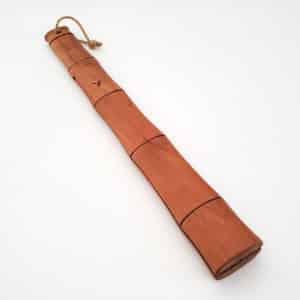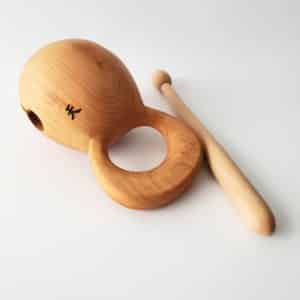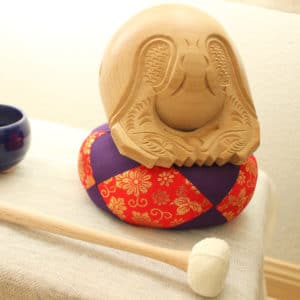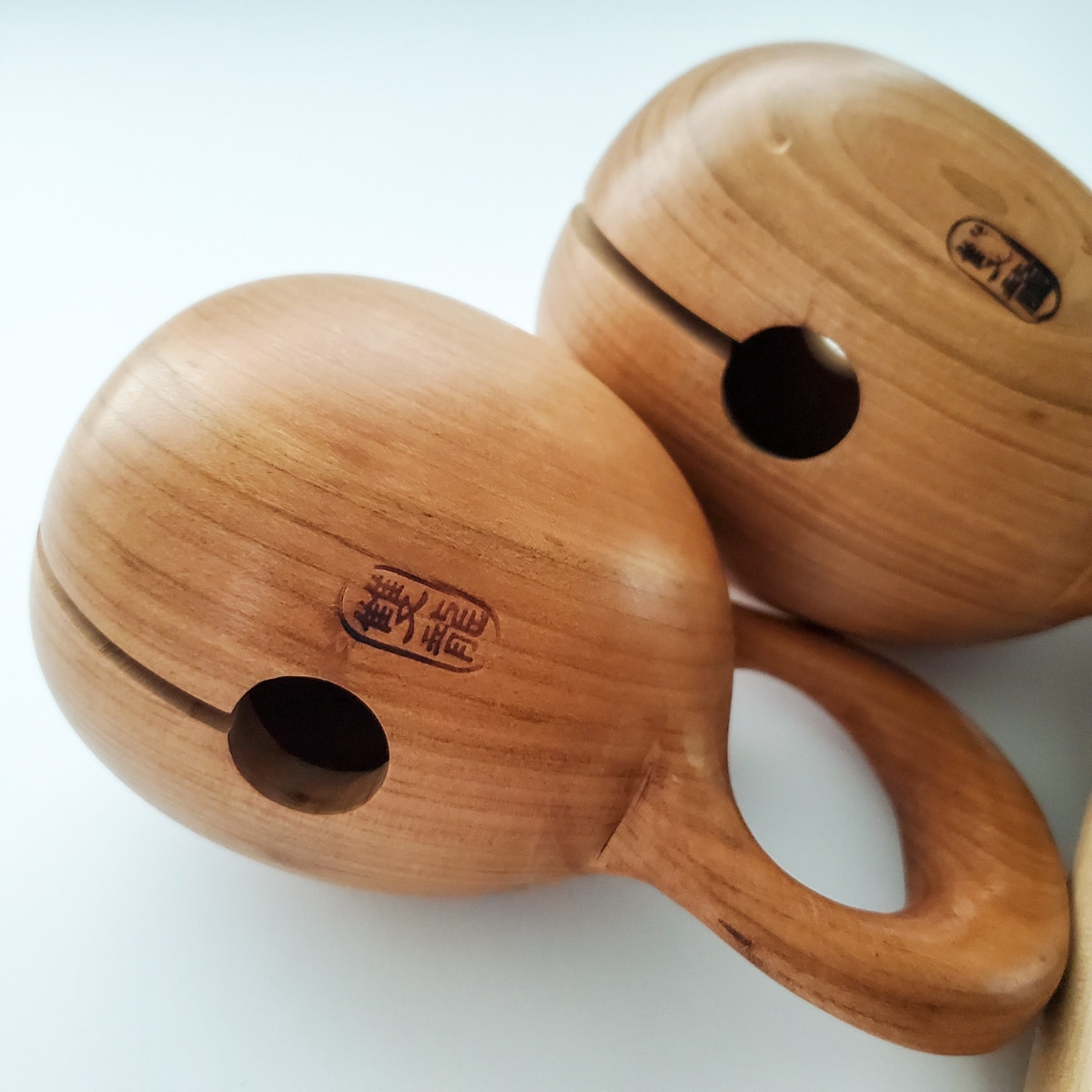
The moktak and chukpi are traditional Korean percussive instruments used during meditation. We are pleased to make them available here at Still Sitting.
The moktak is a drum similar in shape and timbre to the Japanese mokugyo, sometimes called a “fish drum.” The chukpi or “bamboo clacker,” is slapped against the hand, emitting a loud CLAP, which signals the beginning or end of a meditation period.
Crafting a moktak and chukpi is a meticulous process that requires skill and precision. Traditionally, artisans carve these instruments by hand from high-quality wood, carefully shaping each component to achieve the desired form and resonance. The wood used for the moktak and chukpi is selected for its durability and acoustic properties, ensuring a clear and resonant sound when played.
We invite you to learn about the history and tradition of these instruments, and consider making them part of your own meditation practice.
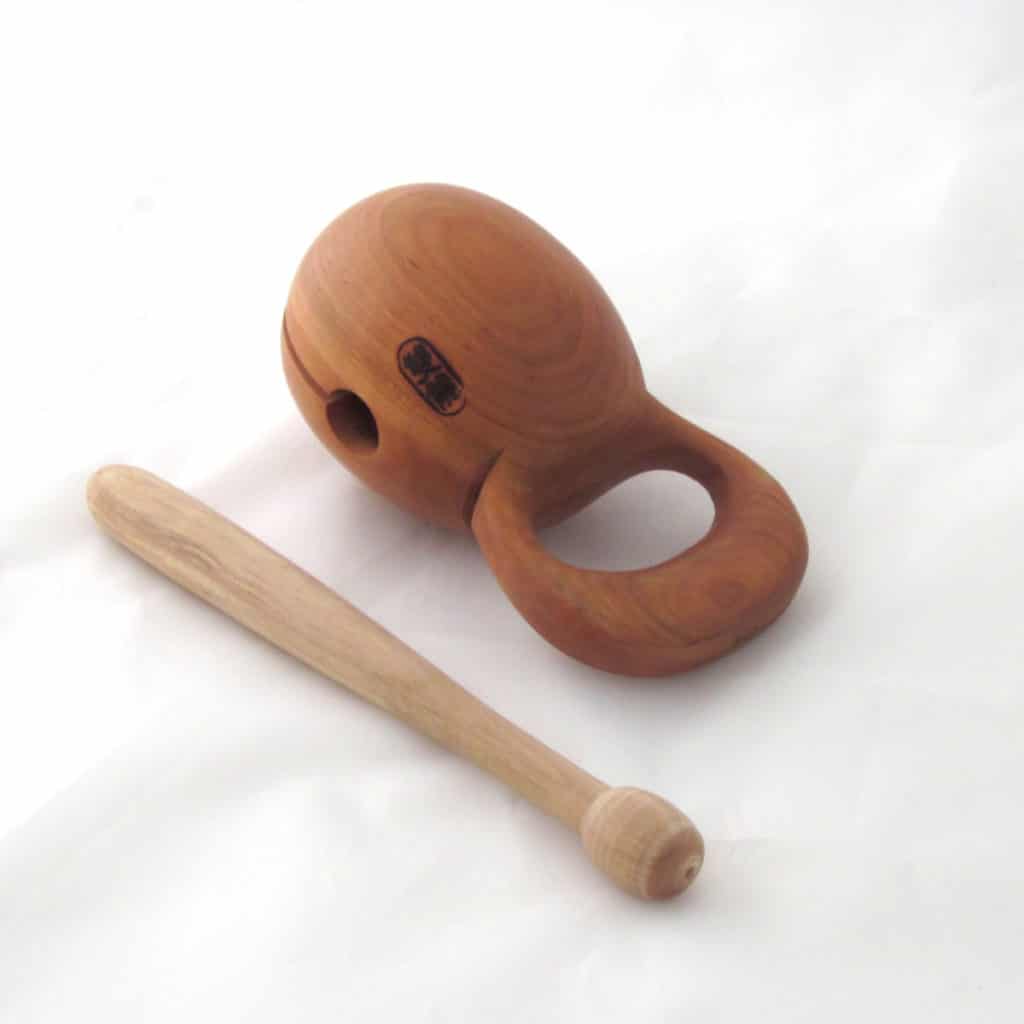
What is a Moktak?
The Moktak is a percussive instrument used in Korean Buddhism. It is traditionally carved from wood and shaped like a fish, but may also be inscribed like a lotus flower. The lotus shape symbolizes purity and enlightenment.
The moktak bears similarities both in form and function to the Japanese mokugyo or “fish drum.” It is customarily used to keep time for chanting and reminds practitioners to be wakeful during their recitation. A fish never sleeps!
The moktak’s design is simple yet elegant, featuring a hollow body with a handle and a rounded head adorned with a central boss. Its compact size and ergonomic handle allow it to be held in one hand and played using a wooden striker in the opposite hand.
Moktaks are traditionally crafted from wood but occasionally from metal, or a combination of both. High-quality hardwoods such as maple, cherry, or oak are often preferred for their durability and resonance. For metal moktaks, brass or bronze are commonly used due to their rich tone.
We offer a beautiful Korean-made moktak and wooden striker that are both crafted from apricot wood. The drum is designed to be handheld with a generous grip.
Hear the sound of our moktak drum.
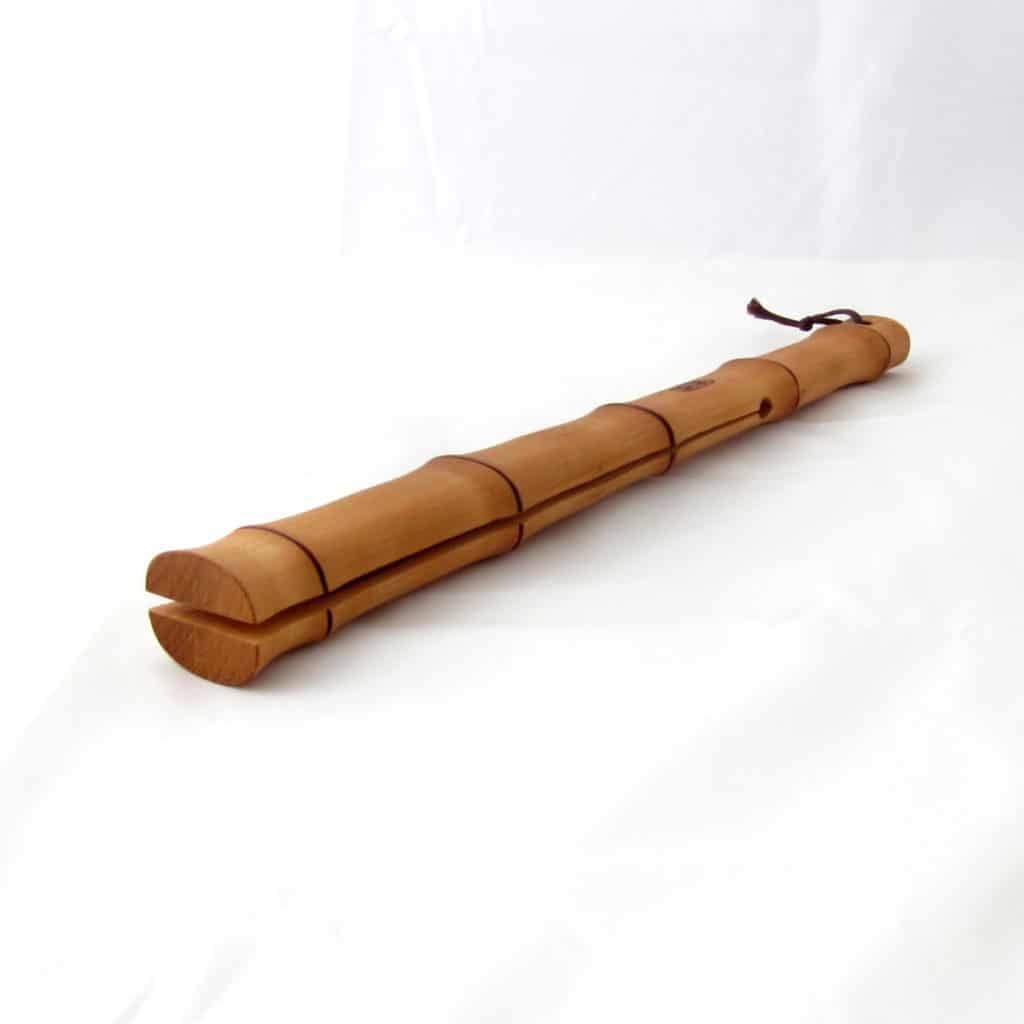
What is a Chukpi?
The Chukpi, often a companion piece to the Moktak, is used similarly to wooden clappers in the Japanese Zen tradition: to signal the beginning and end of meditation periods.
The clear, crisp CLAP, of the chukpi being slapped against an open palm calls attention to the present moment.
Chukpi are traditionally crafted from a split bamboo reed, but are now often made from a variety of wood, which is adorned with carvings or inscriptions.
We are proud to offer a Korean-made chukpi that is crafted from long-lasting apricot wood. The instrument is carved to take on the shape of bamboo, but with the durability and timbre of wood. It measures 17” x 2” and comes with a twine strap, which can be used to hang it up.
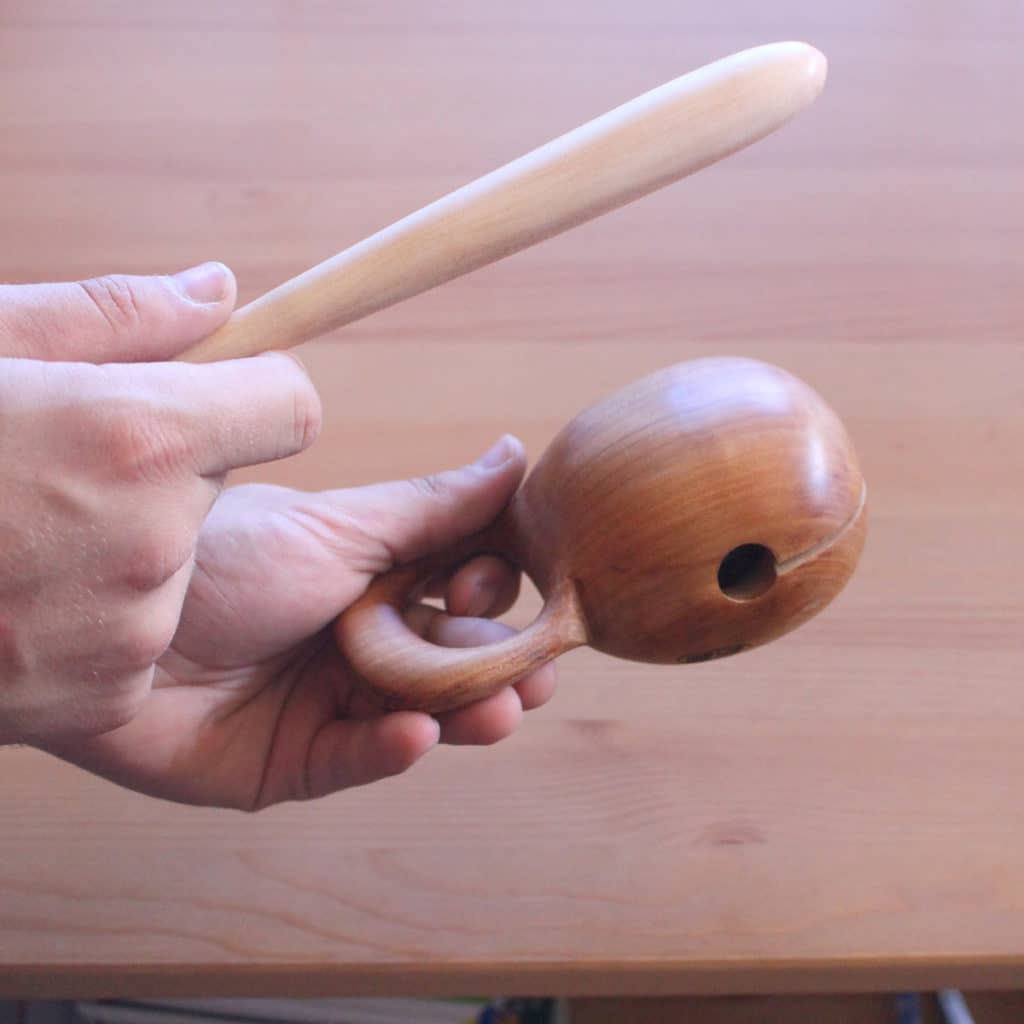
The cultural significance of the moktak and chukpi
In Korean Buddhism, the moktak and chukpi play a role in religious rituals, meditation practices, and communal gatherings. The instruments serve practical functions in the day-to-day practice at Buddhist temples during chanting.
During chanting sessions or ceremonial rites, the rhythmic sound of the Moktak resonates throughout the temple, guiding practitioners into a state of focus and mindfulness. Similarly, the Chukpi serves as a visual and tactile aid for meditation, helping practitioners maintain concentration.
These instruments also hold deep cultural significance as well, and are imbued with spiritual meaning through their imagery and form. Their presence in temples and monasteries across Korea reflects the enduring legacy of Buddhist teachings and practices in Korean culture.
-
Product on saleChukpi
$65.00$55.00 -
Product on saleMoktak Korean Drum
$189.00$175.00 -
Mokugyo Zen Drum$245.00

